Home>Dining>Events & Etiquette>What Are The 20 Table Manners?
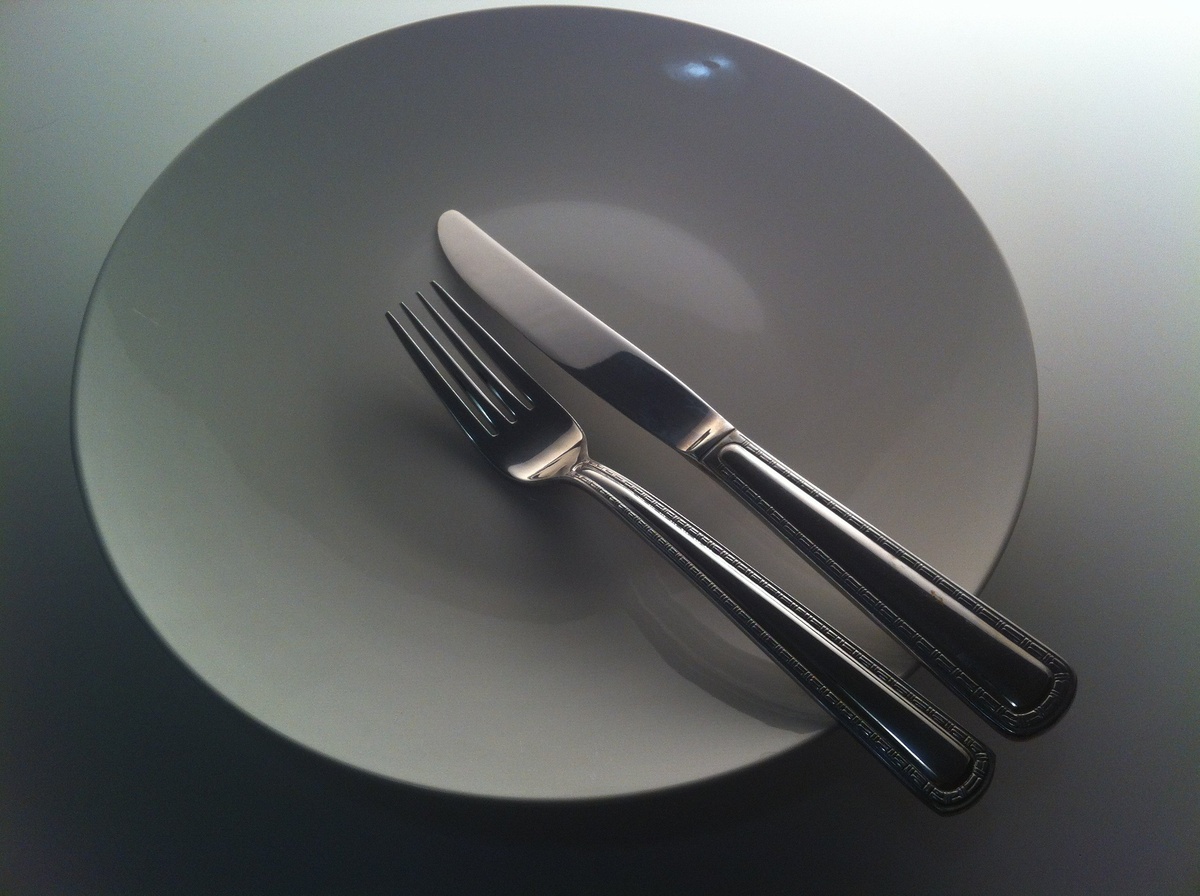

Events & Etiquette
What Are The 20 Table Manners?
Modified: December 7, 2023
Discover the top 20 table manners for events and etiquette. Improve your dining experience with these essential tips.
(Many of the links in this article redirect to a specific reviewed product. Your purchase of these products through affiliate links helps to generate commission for Storables.com, at no extra cost. Learn more)
Introduction
When attending a formal dinner or a special occasion, knowing proper table manners is essential. Table manners not only showcase your respect and consideration for others, but they also contribute to the overall dining experience. Whether you are dining in a fancy restaurant or attending a formal event, understanding and practicing good table manners can help you navigate social situations with grace and ease.
In this article, we will explore the 20 essential table manners that everyone should know. From using napkins to toasting and excusing yourself from the table, these etiquette rules will help you navigate any dining setting with confidence.
Key Takeaways:
- Mastering table manners enhances dining experiences, showcasing respect and consideration. From using napkins to toasting, these etiquette rules create a harmonious and enjoyable atmosphere for all diners.
- Proper etiquette during meals contributes to a positive dining environment. Observing table manners, from sitting posture to excusing oneself, demonstrates respect and gratitude towards hosts and fellow diners.
Read more: What Are Table Manners?
Using Napkins
One of the first things you’ll encounter at a table is a napkin. When sitting down to a meal, you should gently unfold your napkin and place it on your lap. The napkin remains on your lap throughout the meal and should be used to dab your mouth or fingers as needed. Avoid using the napkin to wipe your face or blow your nose.
If you need to leave the table temporarily during the meal, place your napkin loosely on your chair to indicate that you will be returning. At the end of the meal, neatly fold your napkin and place it to the left of your plate.
Remember, the purpose of the napkin is to maintain cleanliness and presentability. By using it appropriately, you demonstrate your consideration for others and your respect for the dining environment.
Sitting and Posture
Proper sitting and posture are key aspects of table manners. When you arrive at the table, wait to be seated or follow the guidance of the host. Once seated, sit up straight with your shoulders back and avoid slouching or lounging. Keep your elbows off the table during the meal, as this is considered impolite.
Keep your feet flat on the floor or lightly crossed at the ankles. Crossing your legs or resting one leg on the chair is frowned upon and can be seen as disrespectful. Maintain a comfortable but respectful posture throughout the meal.
Additionally, avoid fidgeting, tapping your fingers, or playing with utensils while waiting for the food. Respect the dining setting by maintaining a composed and attentive presence.
Remember, sitting and posture play a significant role in portraying your attentiveness and respect for others at the table. Practice good posture to create a positive impression and enhance your overall dining experience.
Utensil Usage
When it comes to using utensils, there are a few important rules to follow. The general rule is to work from the outside in, using the outermost utensils first and progressing towards the center as each course is served.
Hold your utensils properly, gripping the knife with your dominant hand and the fork with your other hand. Avoid holding your utensils like a pencil or stabbing your food with the fork. Instead, use a gentle cutting motion with the knife and bring the food to your mouth with the fork.
When you have finished using your utensils, place them on your plate horizontally, with the handles at 4 o’clock and the tips at 10 o’clock. This signals to the waitstaff that you have finished the course.
If you need to take a break during the meal, rest your utensils on the plate with the handles touching the edge, forming an inverted ‘V’ shape.
Remember, using utensils properly demonstrates your respect for the food and the dining experience. By practicing proper utensil usage, you can navigate any formal or informal meal setting with ease.
Passing Food
Passing food around the table requires some etiquette as well. If you are hosting the meal, it is your responsibility to initiate the passing of dishes. Offer the dish to your guest on your right first, and then pass it in a clockwise direction around the table.
As a guest, when a dish is passed to you, take a moderate portion and then pass it along without taking seconds. Avoid picking through the dish or taking a large portion that might deprive others of the opportunity to enjoy it.
When passing a plate or bowl, use your right hand and pass it to the right, allowing others to take a portion before it continues around the table. If someone requests an item that is out of their reach, offer to pass it to them instead of reaching across their space.
Remember, passing food gracefully is a gesture of generosity and consideration towards others at the table. Be mindful of the flow of dishes and ensure that everyone has a chance to partake in the meal.
Read more: What Are Singapore’s Table Manners?
Commencing and Finishing the Meal
Commencing and finishing a meal with proper etiquette is a polite way to acknowledge the start and end of the dining experience. When everyone is seated and ready to begin, wait for the host or the guest of honor to unfold their napkin and place it on their lap before you do the same.
Once everyone has their napkins in their laps, it is appropriate to start eating. However, if you are the guest of honor, it is customary to wait until the host begins before you start.
When you have finished eating, never push your plate away or stack your dishes. Instead, place your utensils on your plate in parallel, with the handles at 4 o’clock and the tips at 10 o’clock. This signifies to the waitstaff that you have finished.
If you are hosting the meal, it is polite to wait for everyone to finish before you signal the end of the meal. You can do this by placing your napkin neatly to the left of your plate or by simply thanking your guests for joining you.
Remember, commencing and finishing the meal with proper etiquette shows your respect for the dining experience and the company of others. By observing these simple gestures, you create a harmonious and enjoyable atmosphere for everyone at the table.
Chew and Swallow
Chewing and swallowing food is a fundamental part of dining, and doing so with proper etiquette is essential. When you take a bite of food, chew with your mouth closed to avoid making any unpleasant sounds. It’s considered impolite to talk with your mouth full or chew loudly.
Take your time to fully chew and savor the flavors of the food before swallowing. Avoid rushing through your meal or taking large bites that may make it difficult to chew properly. If you need to take a sip of your beverage while eating, do so discreetly and without making noise.
If you encounter an undesirable or inedible piece of food, discreetly remove it from your mouth using your napkin or a utensil. Do not spit it out or show any sign of disgust at the table.
Remember, chewing and swallowing with proper etiquette shows respect for the food, the dining experience, and the other guests at the table. By practicing this mannerism, you contribute to an enjoyable and harmonious mealtime atmosphere.
Talking While Eating
Talking while eating is a common part of mealtime conversation, but it’s important to be mindful of proper etiquette when engaging in conversation at the table.
When speaking, try to minimize the amount of food in your mouth. Take small bites and chew thoroughly before speaking, as it can be difficult to understand someone who is talking with a mouthful of food. Avoid speaking with your mouth full, as it can be seen as impolite and unappealing.
It’s also important to be conscious of the volume and tone of your voice. Keep your voice at a conversational level to avoid disturbing other diners, especially in formal or quiet dining settings.
Furthermore, be attentive to the flow of conversation and allow others to speak. Avoid interrupting or monopolizing the conversation, and be respectful of others’ opinions and viewpoints.
Remember, good table manners include respectful and mindful conversation. By adhering to these guidelines, you contribute to a pleasant and enjoyable dining experience for everyone at the table.
Using Toothpicks
Using toothpicks to clean your teeth or remove food particles is common after a meal. However, there are proper etiquette guidelines to follow when using toothpicks in a social setting.
Firstly, it’s important to discreetly use a toothpick. Excuse yourself from the table and find a private area, such as a bathroom, to clean your teeth. Picking your teeth at the table is considered impolite and can be off-putting for others.
When using a toothpick, cover your mouth with your hand or napkin, to ensure that no one sees the process. Avoid using toothpicks excessively or visibly flicking away any food particles that may be dislodged.
After using a toothpick, dispose of it discreetly in a tissue or wrapper, and place it in a waste bin. Avoid leaving used toothpicks on the table or sticking them into food or plates.
Remember, using toothpicks with proper etiquette demonstrates your consideration for others and ensures that your personal hygiene does not disrupt the dining experience. By following these guidelines, you can maintain a respectful and pleasant atmosphere at the table.
Read more: What Are The Table Manners In Japan?
Finger Food Etiquette
There are occasions when we encounter finger foods or dishes that are traditionally eaten with our hands. It’s important to know the proper etiquette for handling finger foods to maintain proper decorum while enjoying the meal.
When eating finger foods, it is acceptable to use your fingers instead of utensils. However, make sure your hands are clean and dry before handling any food.
When picking up a piece of food, use your thumb and index finger or thumb, index, and middle finger to create a “pinch” grip. Avoid touching your food with your whole hand or licking your fingers excessively.
If you are unsure if a particular dish should be eaten with your hands or utensils, observe others at the table or take cues from the host. When in doubt, it’s always better to ask politely.
Remember, finger food etiquette allows you to enjoy a hands-on dining experience while still maintaining proper manners. By practicing this etiquette, you can enjoy finger foods with confidence and grace.
Soup Etiquette
Enjoying a bowl of soup requires proper etiquette to ensure a graceful and mess-free dining experience. Here are some guidelines to follow when it comes to soup etiquette:
1. Use the appropriate utensils: When served soup, use the soup spoon provided. The spoon’s bowl should be appropriately-sized for sipping and scooping the soup.
2. Proper handling of the spoon: Hold the soup spoon by resting the handle in the palm of your hand, using your index finger and thumb to guide the spoon. Avoid holding the spoon with your entire hand or gripping it too tightly.
3. Sip from the side of the spoon: When taking a spoonful of soup, sip from the side of the spoon, avoiding slurping or making noise. Take small sips to avoid taking in too much soup at once.
4. Do not blow on your soup: If your soup is too hot, let it cool naturally. It is impolite to blow on your soup, as it may result in spraying droplets onto others.
5. Use the bread or cracker to scoop soup: If there are bread or crackers served alongside the soup, you can use them to scoop up small amounts of soup. However, do so discreetly and avoid dunking large pieces of bread into the soup.
6. Place your spoon on the soup plate: When pausing during the soup course or when you have finished, rest your spoon on the saucer or in the soup plate. Avoid leaving the spoon in the bowl or letting it rest on the edge of the bowl.
Remember, practicing proper soup etiquette shows your respect for the dining experience and consideration for others at the table. By following these guidelines, you can enjoy your soup with poise and elegance.
When dining, always place your napkin on your lap, chew with your mouth closed, and wait for everyone to be served before starting to eat. These simple table manners show respect for others and make for a more pleasant dining experience.
Tea and Coffee Etiquette
Participating in a tea or coffee ceremony often involves specific etiquette to follow. Whether you’re attending a formal tea ceremony or enjoying a casual coffee gathering, here are some general guidelines to uphold:
1. Hold the cup properly: When holding a teacup or coffee cup, use your thumb and index finger to hold onto the handle. Avoid gripping the cup with your entire hand or wrapping your fingers around the rim.
2. Stir your beverage gently: If your tea or coffee requires stirring, do so slowly and gently to avoid noise or splashing. Avoid clinking the spoon against the cup and never leave the spoon in the cup after stirring.
3. Sip without noise: Take small, quiet sips when consuming your tea or coffee. Avoid slurping or making noise while drinking, as it is considered impolite and may disrupt the ambience.
4. Add condiments with care: Whether you prefer milk, sugar, lemon, or other condiments in your tea or coffee, add them sparingly and with consideration to personal taste. Stir gently after adding condiments to mix them properly.
5. Use saucers and coasters: When offered a saucer or coaster, use it to place your cup when it’s not in use. This helps protect the table’s surface from heat or potential spills.
6. Respect tea ceremonies: When participating in a formal tea ceremony, follow the instructions and guidance provided by the host or tea master. Observe and respect the traditional rituals associated with the ceremony.
Remember, practicing tea and coffee etiquette allows you to enjoy these beverages with elegance and respect for the cultural traditions associated with them. By following these guidelines, you can fully embrace the experience and show consideration for those around you.
Bread and Butter Etiquette
When bread and butter are served as part of a meal, there are certain etiquette guidelines to keep in mind:
1. Take a small portion: Start by taking a small piece of bread from the bread basket, rather than grabbing a large piece or handful. It’s polite to take only what you will consume.
2. Use your butter knife: Once you have taken a piece of bread, use your butter knife to spread butter onto your individual bread plate or onto the bread itself. Avoid double-dipping the knife into the communal butter dish.
3. Break bread into bite-sized pieces: Instead of biting into a whole slice of bread, break it into smaller, bite-sized pieces that are easier to eat. This also helps to prevent crumbs from falling onto the table or your clothing.
4. Butter your bread as you go: Rather than buttering all your bread at once, butter each piece as you plan to eat it. This helps to keep the bread fresh and prevents excess butter from melting onto the plate.
5. Avoid “bread and butter plate” faux pas: In some formal dining settings, a separate small bread and butter plate may be provided. If one is present, use it to place your buttered bread instead of placing it directly on your dinner plate.
6. Use your bread to help with other dishes: It is common to use a small piece of bread to help push food onto your fork or scoop up sauce or gravy. However, do so discreetly and without excessive use of bread as a substitute for utensils.
Remember, bread and butter etiquette is about being considerate and maintaining proper table manners. By following these guidelines, you can enjoy your bread alongside your meal with elegance and respect for others at the table.
Read more: What Are Acceptable Table Manners?
Rice and Noodle Etiquette
When it comes to dining etiquette, understanding how to eat rice and noodles gracefully can enhance your dining experience. Here are some etiquette tips to keep in mind:
1. Use utensils skillfully: Rice and noodles are typically eaten with chopsticks or a fork and spoon. Practice using these utensils properly to pick up and enjoy each strand of noodle or grain of rice.
2. Avoid slurping: While slurping noodles is acceptable in some cultures, it is generally considered impolite in formal dining settings. Strive to eat your noodles quietly and avoid creating excessive noise.
3. Avoid playing with your food: Twirling noodles around your chopsticks or using them to play with your food can be seen as immature or disrespectful. Maintain a composed demeanor and focus on enjoying your meal.
4. Use a small portion: When serving yourself rice, take a small portion rather than piling a large mound on your plate. This allows for easier consumption and prevents wasting food.
5. Use a spoon for rice: If chopsticks are challenging for you to use with rice, it is acceptable to use a spoon for scooping up rice. However, avoid using your hands or fingers to pick up individual grains of rice.
6. Cut long noodles if necessary: When served with long noodles, it is proper to cut them into manageable lengths using your chopsticks or a utensil before eating. This helps to prevent the awkwardness of attempting to eat a long strand.
Remember, rice and noodle etiquette varies among cultures, so be mindful of the cultural context in which you are dining. By practicing these etiquette tips, you can enjoy your rice and noodles with grace and respect for the dining experience.
Salad Etiquette
When enjoying a salad as part of a meal, there are etiquettes to follow that contribute to an elegant and enjoyable dining experience:
1. Use the proper utensils: Salad is typically eaten with a fork. Use the outermost fork at your place setting or the one specifically provided for salad.
2. Cut and fold your greens: If the salad leaves are large or unwieldy, cut them into smaller, bite-sized pieces using the side of your salad fork. When eating, gently fold the leaves onto the tines of your fork instead of stabbing them.
3. Dress the salad subtly: When dressing your salad, use moderation. Overdressing the salad can overpower the flavors and make it messy to eat. Drizzle the dressing lightly and toss the salad gently to distribute the flavors evenly.
4. Avoid slurping or loud chewing: As with any other food, avoid making noise while eating the salad. Chew with your mouth closed and refrain from slurping up lettuce or vegetables.
5. Place used utensils on your plate: When you have finished your salad course, place your used fork neatly on your plate or to the left of your plate. Avoid leaving it on the table or resting it on the edge of your plate.
6. Be mindful of salad toppings: If the salad includes toppings such as nuts, croutons, or other small ingredients, take small portions to avoid an imbalanced bite or running out of those toppings prematurely.
Remember, salad etiquette focuses on maintaining a graceful and respectful approach to enjoying your greens. By observing these guidelines, you can navigate a salad course with sophistication and elegance.
Dessert Etiquette
After a satisfying meal, dessert is often the sweet finale that brings the dining experience to a close. Here are some etiquette tips for enjoying dessert:
1. Wait for the host’s cue: In formal dining settings, it is customary to wait for the host or the guest of honor to initiate the start of the dessert course. Avoid diving into the dessert before being given the signal to do so.
2. Use the appropriate utensils: Most desserts are enjoyed with a fork or spoon. Use the utensil provided or, in the absence of one, observe the type of dessert and choose the appropriate utensil accordingly.
3. Pace yourself: Desserts are meant to be savored, so take small bites and enjoy the flavors. Avoid rushing through the dessert course and allow yourself time to fully appreciate each mouthful.
4. Wait for others to be served: If the dessert is being served individually, wait until everyone at the table has been served their dessert before taking your first bite. This ensures that everyone can start the course together.
5. Avoid talking with your mouth full: As with any other meal, avoid speaking with your mouth full while enjoying dessert. Finish chewing and swallow before engaging in conversation.
6. Use the appropriate serving utensils: If a dessert is presented family-style, use the serving utensils provided to transfer the dessert onto your plate. Avoid using your own personal utensils to collect portions from the communal dish.
Remember, dessert etiquette is about savoring the final course of the meal and showing respect for the dining experience. By following these tips, you can end the meal on a sweet note and leave a positive impression on your fellow diners.
Ordering and Paying the Bill
When dining out at a restaurant or attending a group meal, there are etiquettes to follow when ordering and paying the bill:
1. Take turns ordering: If you are dining with a group, it is customary to take turns placing your orders. Start with the guest of honor or the person seated closest to the host, and proceed in a clockwise or predetermined order.
2. Be considerate with special requests: When ordering, be mindful of special dietary needs or preferences. Avoid making excessive or complicated requests that may inconvenience the kitchen staff or delay the ordering process for others.
3. Be aware of the bill arrangement: If you are dining with a group, it’s important to determine in advance how the bill will be handled. Some groups split the bill equally, while others prefer to divide it based on what each person ordered. Communicate your preferences gracefully and be flexible to accommodate the group’s decision.
4. Be discreet when discussing payment: Avoid discussing payment loudly or making a scene when it comes to settling the bill. If you need to discuss payment arrangements with the waitstaff or your fellow diners, do so discreetly and respectfully.
5. Show gratitude to the person paying: If someone else is paying for the meal, express your appreciation and thank them graciously. It is customary to offer to pay or contribute, but if they insist on treating, accept their gesture with gratitude.
6. Tip appropriately: In many cultures, it is customary to leave a gratuity for the waitstaff as a gesture of appreciation for their service. Consult local customs or guidelines to determine the appropriate tip amount, and consider the service quality when determining the tip percentage.
Remember, ordering and paying the bill etiquette is about showing consideration for others and maintaining a harmonious dining experience. By following these guidelines, you can navigate the process smoothly and respectfully.
Read more: What Are Good Table Manners?
Mobile Phone Usage
In today’s digital age, it’s important to be mindful of your mobile phone usage when dining or attending social gatherings. Here are some etiquette guidelines to follow:
1. Keep your phone out of sight: When dining with others, it’s best to keep your mobile phone tucked away and out of sight. This shows respect and attentiveness to the company you are with.
2. Avoid using your phone during meals: Refrain from using your phone to make calls, send text messages, or browse social media while you are at the table. Instead, focus on the conversation and interaction with your dining companions.
3. Excuse yourself for urgent calls: If you are expecting an important call or need to make an urgent call, politely excuse yourself from the table and step away to take the call. Keep the conversation brief and return promptly.
4. Use your phone for emergencies only: If there is an emergency or urgent situation that requires your attention, discreetly handle it with your mobile phone. Excuse yourself from the table and step away to address the matter privately.
5. Silent mode or vibrate: To avoid disrupting the dining experience, set your phone to silent mode or vibrate. This prevents ringtones or notification sounds from interrupting conversation or creating a disturbance.
6. Be present and engaged: Engage in meaningful conversation and be fully present with your dining companions. Show interest and actively participate in the mealtime experience without the distraction of your phone.
Remember, mobile phone usage etiquette is about respecting those around you and fostering a genuine connection with your dining companions. By practicing these guidelines, you can create a more enjoyable and engaging dining atmosphere.
Appreciating the Host
When attending a dinner or social gathering as a guest, it is important to express your gratitude and appreciation to the host for their hospitality. Here are some etiquette tips to show your appreciation:
1. Send a thank-you note: After the event, take the time to send a handwritten thank-you note to the host, expressing your gratitude for the invitation and their efforts in hosting the gathering. A heartfelt note can have a lasting impact and is a thoughtful way to show your appreciation.
2. Offer verbal thanks: Before leaving the event or during the course of the evening, take a moment to personally express your thanks to the host. Let them know how much you enjoyed the event, the food, and their company. Be sincere and specific in your appreciation.
3. Bring a thoughtful gift: Show your gratitude by bringing a small token of appreciation for the host. Choose a gift that is thoughtful and considerate, such as a bouquet of flowers, a bottle of wine, or a homemade treat. Present the gift upon arrival or send it in advance.
4. Assist with cleanup: Offer to help with tidying up after the event. Whether it’s clearing the table, washing dishes, or packing leftovers, your willingness to lend a hand shows your appreciation and gratitude for the host’s efforts.
5. Follow up after the event: Reach out to the host a few days after the gathering to express your appreciation once again. Let them know how much you enjoyed the event and the opportunity to spend time together. This simple gesture reinforces your gratitude.
Remember, appreciating the host is an essential part of being a gracious guest. Show your gratitude through a heartfelt note, gestures of assistance, and thoughtful gifts. By doing so, you strengthen your relationship with the host and create a positive impression as a guest.
Toasting and Drinking
Toasting and raising a glass is a common tradition during celebratory events or formal gatherings. Here are some etiquette guidelines to follow when it comes to toasting and drinking:
1. Wait for the host or guest of honor: It is customary to wait for the host or the guest of honor to initiate the toast. If you are in a leadership position or hosting the event, it is appropriate for you to propose a toast.
2. Stand and raise your glass: When a toast is being made, stand up as a sign of respect. Hold your glass by the stem or base with your thumb and index finger and raise it to chest level. Maintain eye contact with the person giving the toast.
3. Toast with sincerity: When offering a toast, express your thoughts or well wishes concisely and sincerely. Avoid long speeches or irrelevant anecdotes. Keep it focused and appropriate to the occasion.
4. Take a sip, don’t chug: After the toast has been made, it is customary to take a sip of your drink. However, avoid chugging the entire glass or taking excessively large sips. The purpose is to acknowledge the toast, not consume the entire drink.
5. Respect non-alcoholic preferences: Not everyone may be consuming alcohol at the event. If you are aware or unsure of someone’s preference, always offer a non-alcoholic alternative, such as sparkling water or a mocktail, so everyone can participate in the toast.
6. Pace yourself: If multiple toasts are being made throughout the event, pace your consumption of alcohol. Drink responsibly and know your limits. It’s important to enjoy the occasion but also maintain control and awareness.
Remember, toasting and drinking etiquette is about showing respect and camaraderie with your fellow guests. By following these guidelines, you can maintain a harmonious and enjoyable atmosphere during these celebratory moments.
Excusing Oneself from the Table
There may be occasions during a meal when you need to excuse yourself from the table. Here are some etiquette guidelines to follow when bidding farewell politely:
1. Wait for an appropriate moment: Choose a suitable break in the conversation or lull in the meal to excuse yourself. Interrupting an ongoing discussion or disrupting the flow of the meal is considered impolite.
2. Use polite language: When excusing yourself, use polite language to convey your intentions. Say “Excuse me” or “I apologize, but I need to excuse myself for a moment.”
3. Show consideration for others: If you are engaged in a conversation, take a moment to acknowledge the person or people you were speaking with and express your regret for leaving the discussion. Let them know that you appreciate their understanding.
4. Leave your napkin: When excusing yourself, leave your napkin loosely folded to the left of your plate. This signals to others that you intend to return to the table.
5. Move your chair discreetly: As you stand up from the table, move your chair back gently and avoid bumping it into other chairs or people nearby. Be mindful of the space and others’ comfort.
6. Return promptly: Once you have finished your task or attended to whatever required your absence, return to the table as soon as possible. This shows respect for the other guests and maintains the continuity of the meal.
Remember, excusing yourself from the table with grace and consideration is an important part of dining etiquette. By following these guidelines, you can navigate the situation smoothly and maintain a positive dining experience for everyone involved.
Read more: What Are Bad Table Manners?
Conclusion
Understanding and practicing proper etiquette during mealtime and social gatherings is essential for creating a harmonious and enjoyable dining experience. By following these 20 table manners, you can navigate any dining setting with confidence and respect for others.
From using napkins and sitting with proper posture to engaging in polite conversation and excusing oneself from the table, these guidelines showcase your consideration and appreciation for the dining experience. Whether you are attending a formal dinner, enjoying a casual meal with friends, or participating in a cultural ceremony, observing these etiquette rules will enhance your interactions and leave a positive impression on others.
Remember, etiquette is about more than just following rules – it is a way to express respect, gratitude, and consideration towards your hosts, fellow diners, and the dining environment. By embracing good table manners, you contribute to an atmosphere of civility, elegance, and enjoyment for everyone involved.
So, the next time you find yourself at a dining table, remember to unfold your napkin, sit up straight, use utensils appropriately, engage in polite conversation, and express your gratitude to your hosts. These small gestures can make a big difference in creating a memorable and satisfying dining experience for all.
Frequently Asked Questions about What Are The 20 Table Manners?
Was this page helpful?
At Storables.com, we guarantee accurate and reliable information. Our content, validated by Expert Board Contributors, is crafted following stringent Editorial Policies. We're committed to providing you with well-researched, expert-backed insights for all your informational needs.

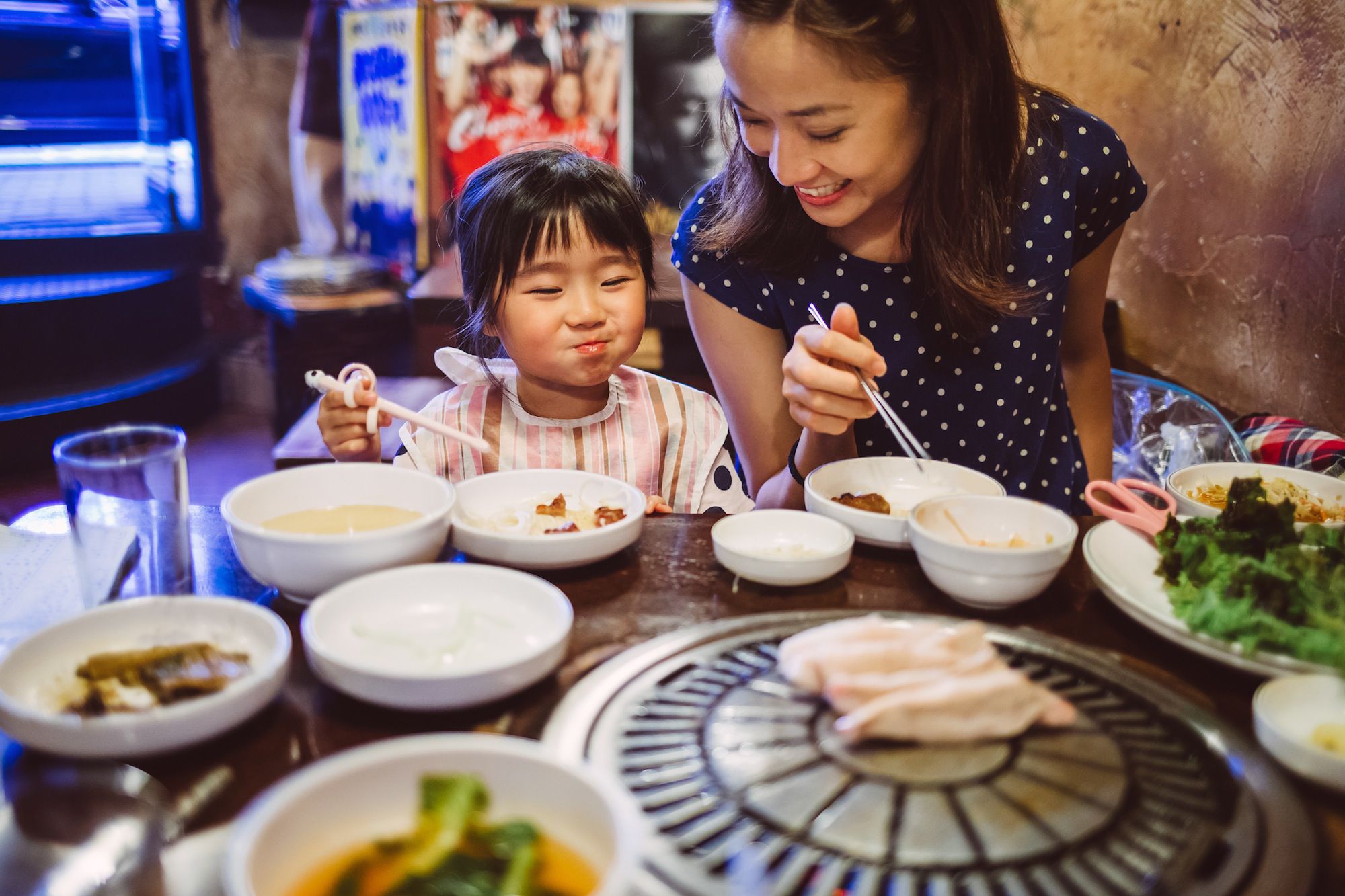
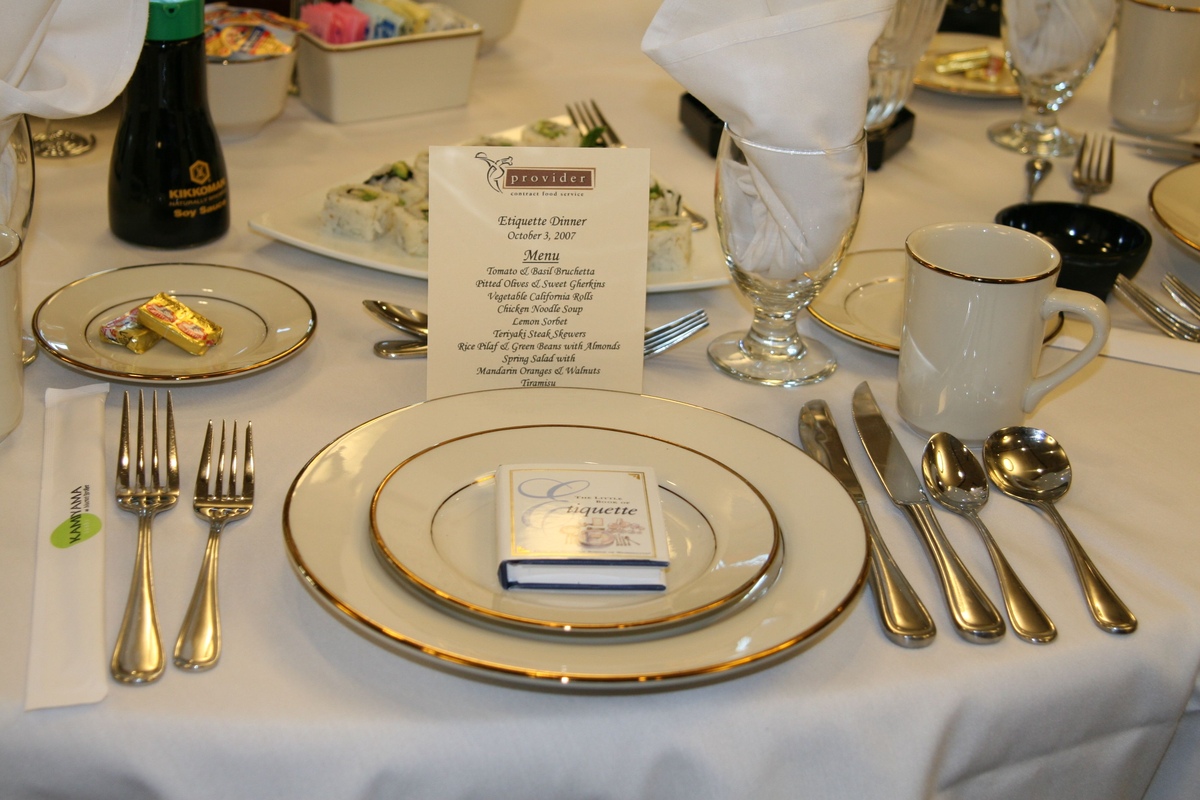



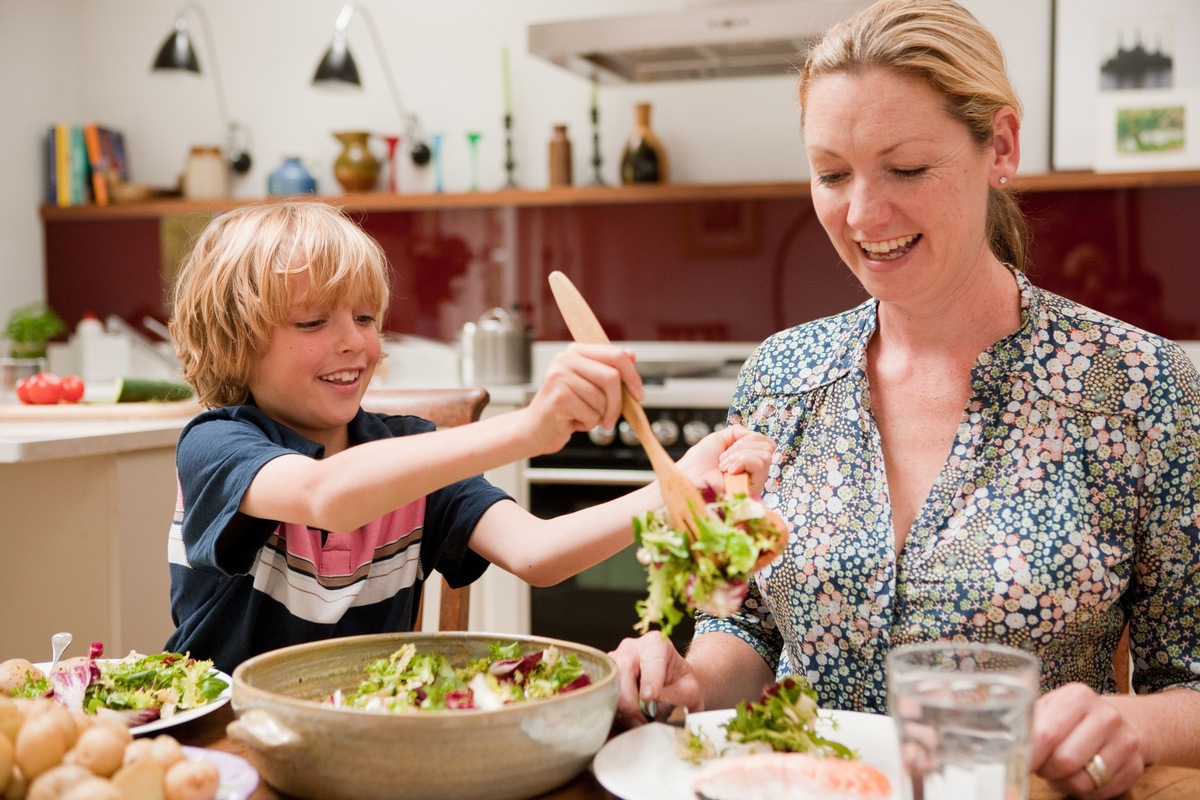

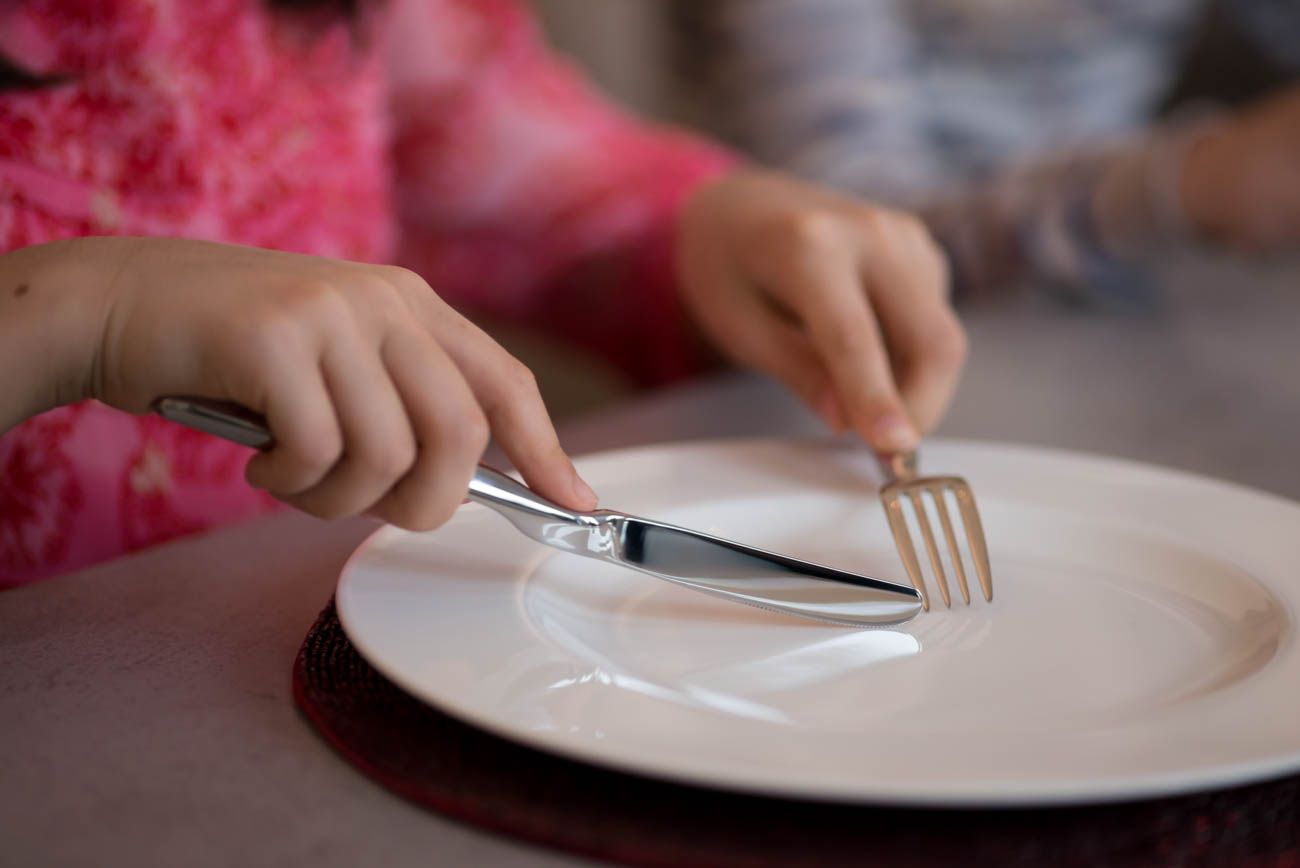
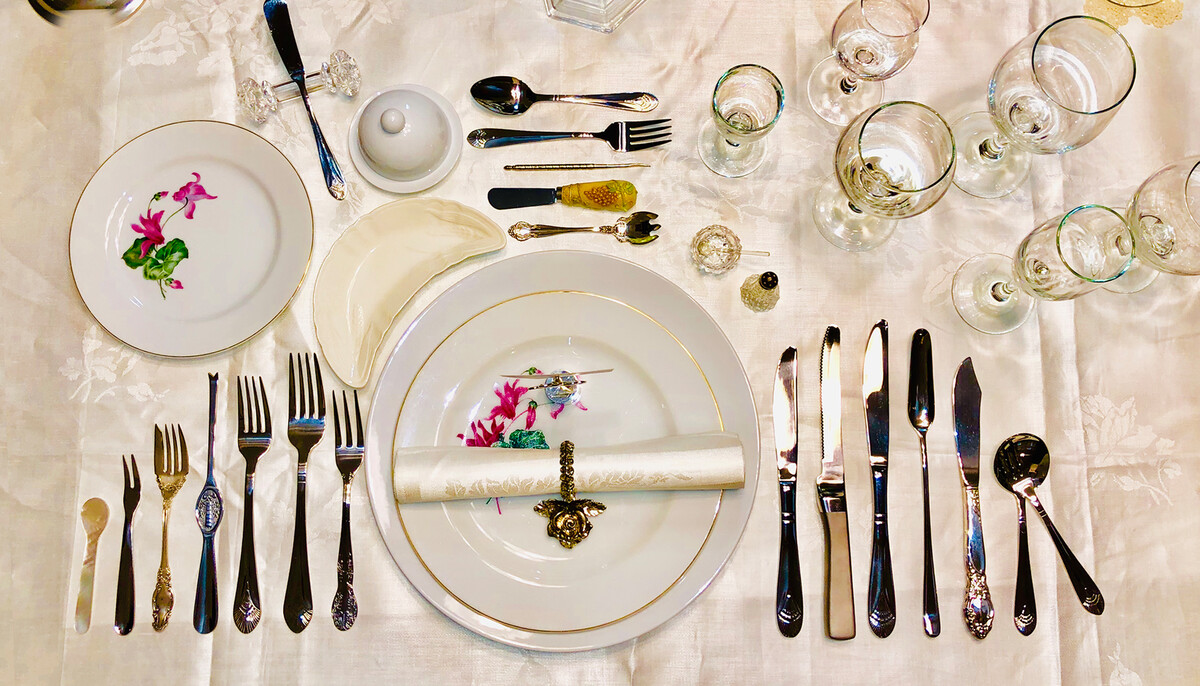

0 thoughts on “What Are The 20 Table Manners?”